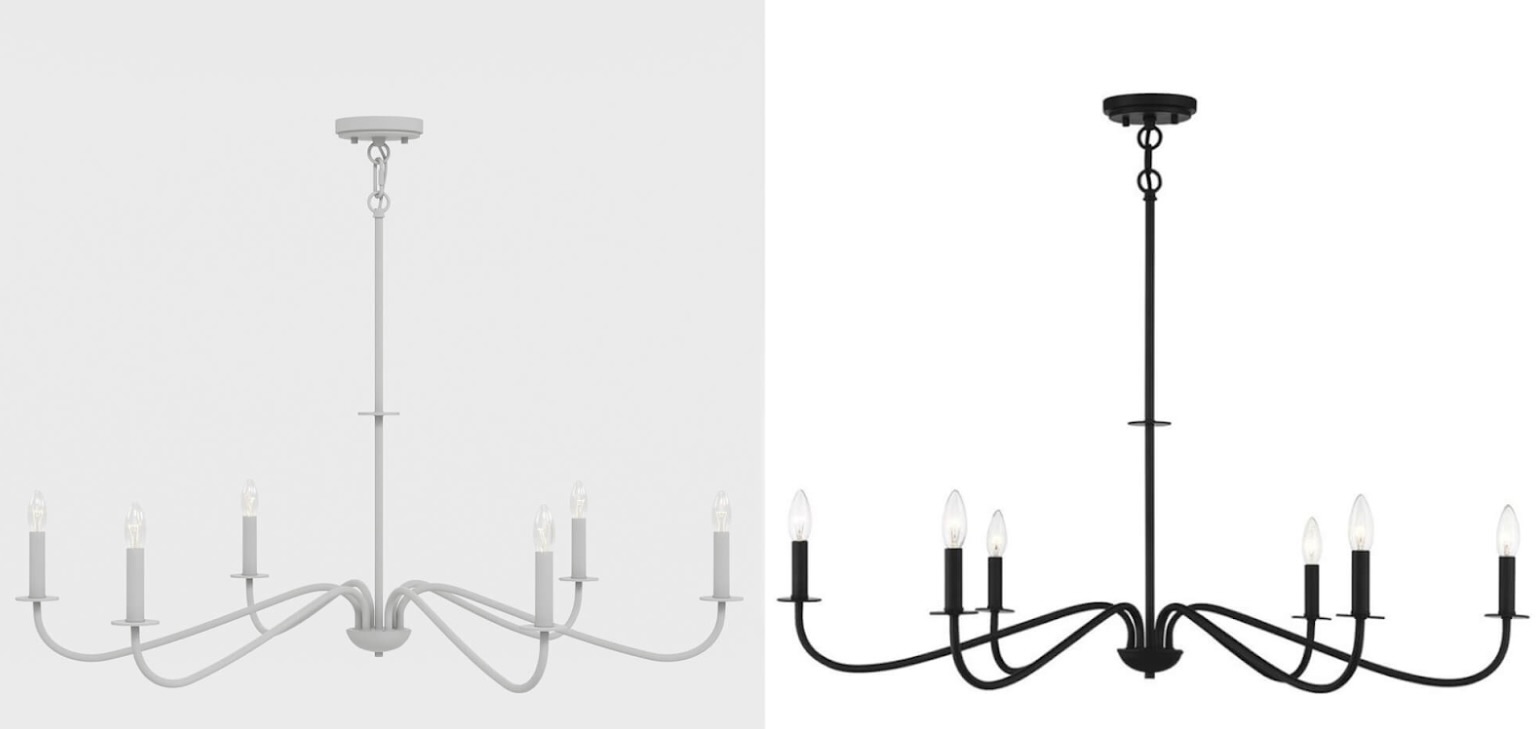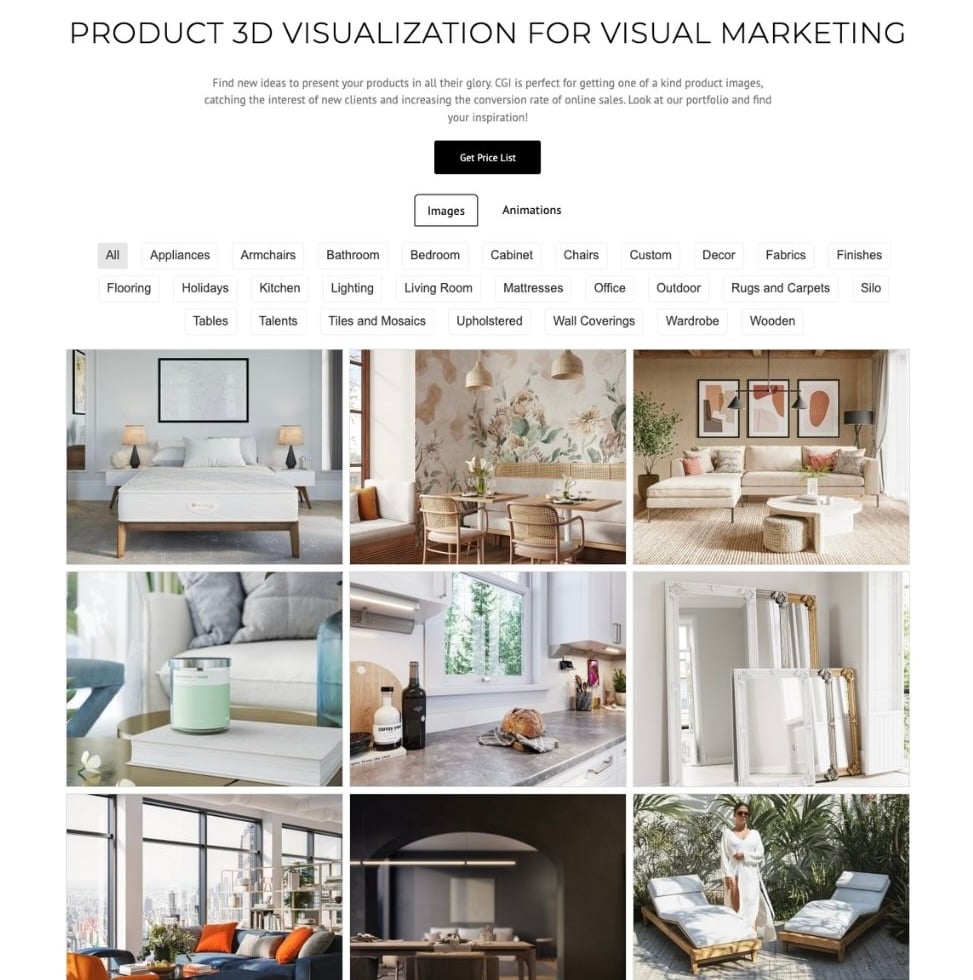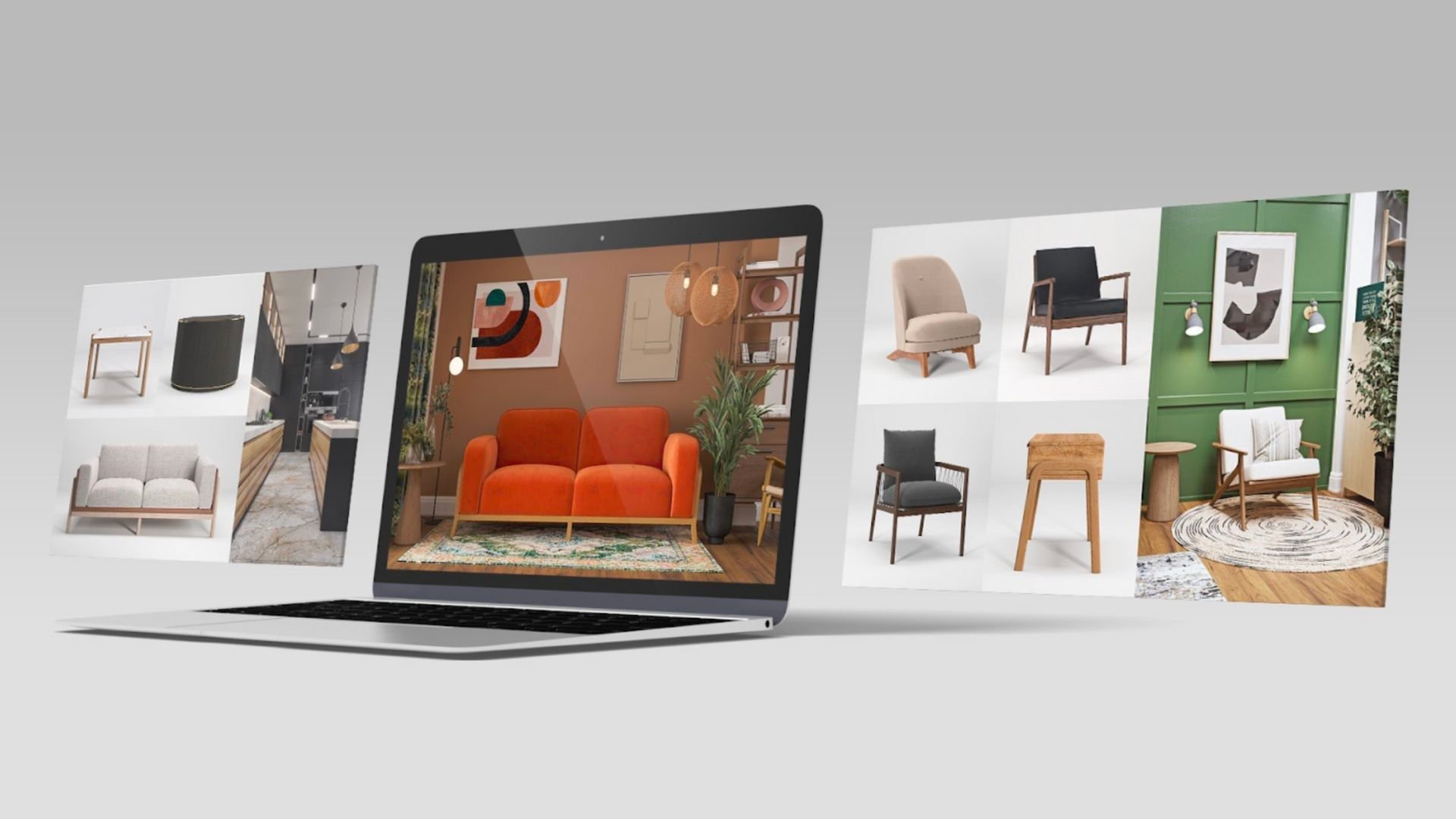Have you ever wondered about the magic behind those stunning images in ads? The enigma of sunning visual marketing is apprehending the basics of 3D modelling that opens room for creativity and innovation. 3D modelling’s significance cannot be overstated because it is changing design visualization, exploration, prototyping, and selling prospects across industries.
In this guide by our 3D rendering company, we’ll uncover the fundamental insights you need to know about product 3D modelling before executing it as a part of your brand content marketing strategy.
Determining Basics of 3D Modelling: When Art Meets Technology
At its core 3D modelling is about making digital 3D representations of objects or spaces. This process is akin to sculpting, but instead of clay, 3D artists use advanced software. This attribute allows to bring any creative vision to life, no matter how complex or intricate it is.
The Versatility of 3D Modelling Across Industries
The spread of CGI (computer-generated images) and 3D modelling transits across various sectors, from gaming and films to engineering, product design, and advertising. This versatility makes it a substantial tool in design and prototyping, giving a glimpse into the future of (AR) augmented reality.
Revolutionizing Product Design and Prototyping
In the realm of product design, where the basics of 3D modelling play a pivotal role, the possibilities are limitless. Product 3D modelling allows for the design of digital prototypes, saving valuable time and resources while reducing errors. This approach allows designers to experiment with colors, materials, and forms, refining ideas and directing to superior effects and customization options.
Diverse Usages of Product Modelling in Visual Marketing
When it comes to creating models, aiming for excellence is non-negotiable. The scope of what can be achieved is vast, from simple effect silhouettes to 360-degree views, complicated lifestyle 3D renderings, and animations. The end pursuit is to create outstanding content for e-commerce and social media that genuinely stands out.
Effect on E-commerce and Social Media Marketing
Utilizing 3D modelling in e-commerce and social media marketing can set your brand apart. High-quality 3D modells supply customers with a lifelike and engrossing thought of an item, enriching their online shopping experience and extending brand appeal.
Knowing the basics of 3D modelling is paramount for any brand planning to incorporate it in its content marketing strategy. At CGIFurniture, we are devoted to instructing and assisting you through this journey, guaranteeing that your business leverages the full potential of 3D modelling to make stunning and effective marketing materials.
Here are five things every brand needs to know before working with a 3D modelling studio and setting up its first assignment:
#1. Understanding Your Needs
Brands’ needs are the foundation for any basic 3D modelling project. Providing a technical assignment with detailed specifications for your 3D model is the compass that will guide your brand to success.
1.1. Significance of Providing a Technical Assignment
A technical assignment is necessary for 3D modelling specialists to understand your vision and requirements for the final result. It’s the roadmap that assures everyone involved in the work is on the same page. By expressing your vision with precision, you eliminate ambiguity and confusion, saving time and resources for yourself and a 3D modelling team.
Think of it this way: if you’re foreseeing a 3D model of a futuristic table, you need to specify not just the general idea but the specifics. What are the dimensions? What shades do you envision? Are there distinctive textures or features that set this table apart? Providing these specifics helps a 3D modeler bring your vision to life with accuracy.
1.2. Dimensions, Colors, Textures, & Specific Features
Dimensions, colors, textures, and specific features are the basics of 3D modelling so it is vital to include them in your technical assignment. Providing detailed pictures of what you want to get a 3D model of will help the specialists even further.
- Dimensions: Define the basic proportions of your 3D model. This guarantees that the outcome in CG renders would look exactly like in real life. For precise color representation, it’s vital to provide photos of the product. This enables 3D modelers to recreate the colors with accuracy, ensuring a true-to-life digital representation.
- Colors: Colors play a pivotal role in setting the tone of your models. Whether you’re aiming for a bold and vibrant look or something more subtle and muted, specifying the color palette is key. To accurately replicate the colors in 3D, it’s advisable to provide either photos or actual material samples of the creation. This ensures the 3D model captures the true essence of the real object.
- Textures: Texture brings 3D models to life, adding depth and realism. Whether you prefer a smooth, sleek finish like polished marble, or a rough, weathered appearance like aged wood, your choice of texture conveys important information about the outcome. Clear communication of desired textures helps 3D artists create a model that resonates with the client’s vision.
- Specific Features: If your 3D model has unique features or intricate details, make sure to highlight them in your specifications. Whether it’s the aerodynamic curves or the intricate patterns, these details have to be clear for 3D artists to replicate them in 3D.
- Blueprints and Sketches: To achieve a model that closely resembles the real outcome, sending sketches or blueprints is essential. This additional information guides the 3D artists in creating basic models that align closely with their real-world counterparts.
By addressing these specifications in your technical assignment, you provide the 3D modeler with the essential components they need to craft a masterwork that fully aligns with your vision.
#2. Embracing the Basics of 3D Modelling Intended Use
To give modelling 3D artists a better understanding of your expectations for the result, they need to know how you will use 3D renderings. Here are some of the most common usages the CGIFurniture team works with:
2.1. Product Design Visualization
The true strength of the basics of 3D modelling is in its capacity to bring ideas to life, delivering a platform for visualizing a range of designs before settling on the final one. This process is vital for iterating through various design options, allowing for experimentation and refinement with minimal effort or expense.
2.2. Product Prototyping
When it comes to development after the design is approved, the basics of 3D modelling take on a critical role. It permits designers and manufacturers to develop detailed prototypes of effects before they are physically built. This not only saves time and aids but also allows for all-out testing and refinement of designs. 3D modelling is the bridge that unites the imagination with the tangible world of prototypes.
2.3. Visual Marketing Materials
Now, let’s talk about marketing. Product 3D modelling plays a crucial role here as well. It lets businesses create captivating visuals, storytelling, and animations that can be used in advertising, product presentations, and promotional materials. Imagine showcasing a new creation with a dynamic 3D animation that highlights its features and benefits – it’s a surefire way to capture the attention of your target audience.
The basics of 3D modelling are not just specialized skills but a gateway to creativity, innovation, and sufficient communication. Whether you are visualizing a building, prototyping an outcome, or marketing a concept, 3D modelling is a versatile tool that can help you achieve your goals.
#3. Budget and Timeline
Learning the cost factors of 3D modelling is vital. A budget not only dictates what can be achieved but also helps avoid unexpected expenses. In marketing and e-commerce, especially in the field of furniture and home decor brands, it’s noteworthy to get this right.
3.1. Establishing a Realistic Budget
The immediate factors influencing the cost of 3D modelling services include the complexity of the model itself and the expertise of the 3D modeler. Intricate models take more time and resources, affecting the budget. Highly skilled professionals on your project’s team may increase the 3D product modelling cost more but can guarantee a polished final result. Last but not least, the number of views will also add to the total price because they require separate rendering.
Besides, evaluate the intended use of the 3D model. Marketing campaigns might require extra features like animations or AR features, which can impact the cost.
3.2. Setting Realistic Timelines
Time is precious in the world of marketing and e-commerce. When planning the timeline for your 3D modelling assignment, keep a few things in mind.
The complexity of your model and its specific requirements play a significant role in the expected timeframe as well. Simple models can be completed quickly, while intricate ones demand more time for fine-tuning.
Rushing an undertaking can lead to subpar results and increased costs. To avoid it, work closely with your 3D modelling team to set clear, achievable goals, ensuring that your project stays on track.
Establishing a clear budget and timeline permits for the efficient use of 3D modelling to create engaging visuals quickly, offering a faster alternative to traditional photoshoots. However, be aware that tasks with urgent deadlines may lead to additional costs, as they require our 3D modellers to work overtime, which is billed at an hourly rate.
#4. Choosing the Right 3D Modelling Provider
Choosing the right 3D modelling services provider is a critical step in assuring the sensation of your undertakings, particularly if you are in the business of marketing, e-commerce, or managing a brand in the furniture and decor industry.
4.1. Professional 3D Modelling Studio
Selecting the right CGI service provider, one that comprehensively understands the basics of 3D modelling, is key to ensuring high-quality outputs. Our studio stands out by offering a dedicated team exclusively for your projects, ensuring:
- Consistent Quality: We focus on maintaining a high standard in every aspect of our work.
- Aesthetic Distinction: Our company understands the significance of visual appeal in your projects.
- Expertise: With specialized skills, we meet your specific needs effectively.
- Deep Understanding: We delve into your vision and requirements, ensuring our approach aligns entirely with your project goals.
- Seamless Adaptation: Our ability to anticipate and adapt to your future needs makes for a smooth project journey.
- Time-Saving Resources: Access to our extensive library of pre-made models and scenes significantly cuts down project timelines.
- Effective Collaboration: Our crew dedication is central to creating outstanding visuals and impactful marketing materials.
The mixture of a devoted team and a rich repository of assets is essential for producing visually outstanding, unique, and engaging content. This approach ensures a consistently high quality in your promotional activities.
4.2. Research and Portfolio Review
When choosing a service provider for your 3D modelling necessities, it’s important to do detailed research on potential 3D modelling service providers. It will give enough information regarding their experience and the quality of work they deliver to discover the right team that aligns with your criteria.
Looking at their portfolio and case studies allows you to understand the realism, details, and creativity of the renders, as well as the products a 3D studio specializes in. Remember, a well-researched choice and a thorough portfolio review are the foundation of successful 3D modeling projects.
4.3. Experience in Similar Projects & Overall Expertise
Incorporating the basics of 3D modelling into your decision-making process is crucial when choosing a 3D modelling service, especially for furniture and home decor brands. It’s paramount to select a provider with a background in these specific industries. Their understanding of the unique requirements and nuances of your niche can greatly influence the quality of the final development.
Assessing a service’s expertise expands further just their industry experience. It contains overall mastery of the basics of 3D modelling and proficiency with advanced techniques as well the latest software and technologies.
A complete review of their portfolio and case studies showcases their ability to apply these skills effectively in real-world scenarios. A dependable service provider should not only meet your existing assignment needs but also demonstrate the ability to stay ahead of the curve with ongoing trends and advancements in 3D modelling.
4.4. Communication and Collaboration
A collaborative process can elevate basics of 3D modelling projects to new heights, encourage open dialogue and feedback. It’s a two-way street, and the best results often emerge from the synergy of diverse ideas. Embrace this spirit of teamwork!
To streamline our collaborative efforts, we rely on top-notch tools like CRM (Customer Relationship Management) systems. They help us manage interactions and keep you informed at every step. Additionally, our Archivizer ensures that valuable project data is organized and accessible, providing user-friendly filtering and storage options.
Direct communication between clients and our specialists, facilitated by a project manager and a client manager, forms the foundation of our process in the basics of 3D modelling. This structured approach ensures that you are consistently involved at every stage of the process.
The 3D modelling team sends interim results at each phase, seeking your approval and feedback. This process of continuous engagement and approval not only minimizes errors and misunderstandings but also accelerates the journey toward a satisfactory and high-quality outcome. This collaborative method is key to achieving effective results in the basics of 3D modelling.
#5. File Formats and Future-Proofing
In 3D modeling, getting a handle on file formats and ensuring your models are ready for future usage are key steps.
5.1. Desired File Formats
File formats are the building blocks of 3D modeling. At CGIFurniture, we work with a range of file formats like OBJ, FBX, and STL. They are widely used and adaptable, fitting into different aspects of 3D modelling and helping to keep our work flexible and compatible. You need to choose formats that work well with your software and platforms so your models will stay useful and relevant, even as technology changes.
5.2. Adapting to Tomorrow’s Needs
Now, let’s explore future-proofing your 3D models, a crucial aspect of mastering the basics of 3D modelling. It’s smart to consider options for future adjustments or modifications. Ensure that the chosen file formats support scalability and adaptability. This way, 3D creations can evolve with your needs and stay relevant in a rapidly changing digital landscape.
Diving into the world of product 3D modelling requires careful consideration of your needs, budget, deadlines, and a 3D modelling contractor perfect for your goals. Collaboration and clear communication with your 3D modelling specialists are key to bringing your vision to life. We encourage businesses to plan and communicate requirements before beginning the 3D modelling project.
With our expertise in basic and advanced 3D modeling services, we’re ready to transform your concepts into reality. Let’s collaborate to create product 3D models that will elevate your brand and captivate your audience. Reach out to us now or book a free demo consultation!



















Leave a Reply
Want to join the discussion?Feel free to contribute!